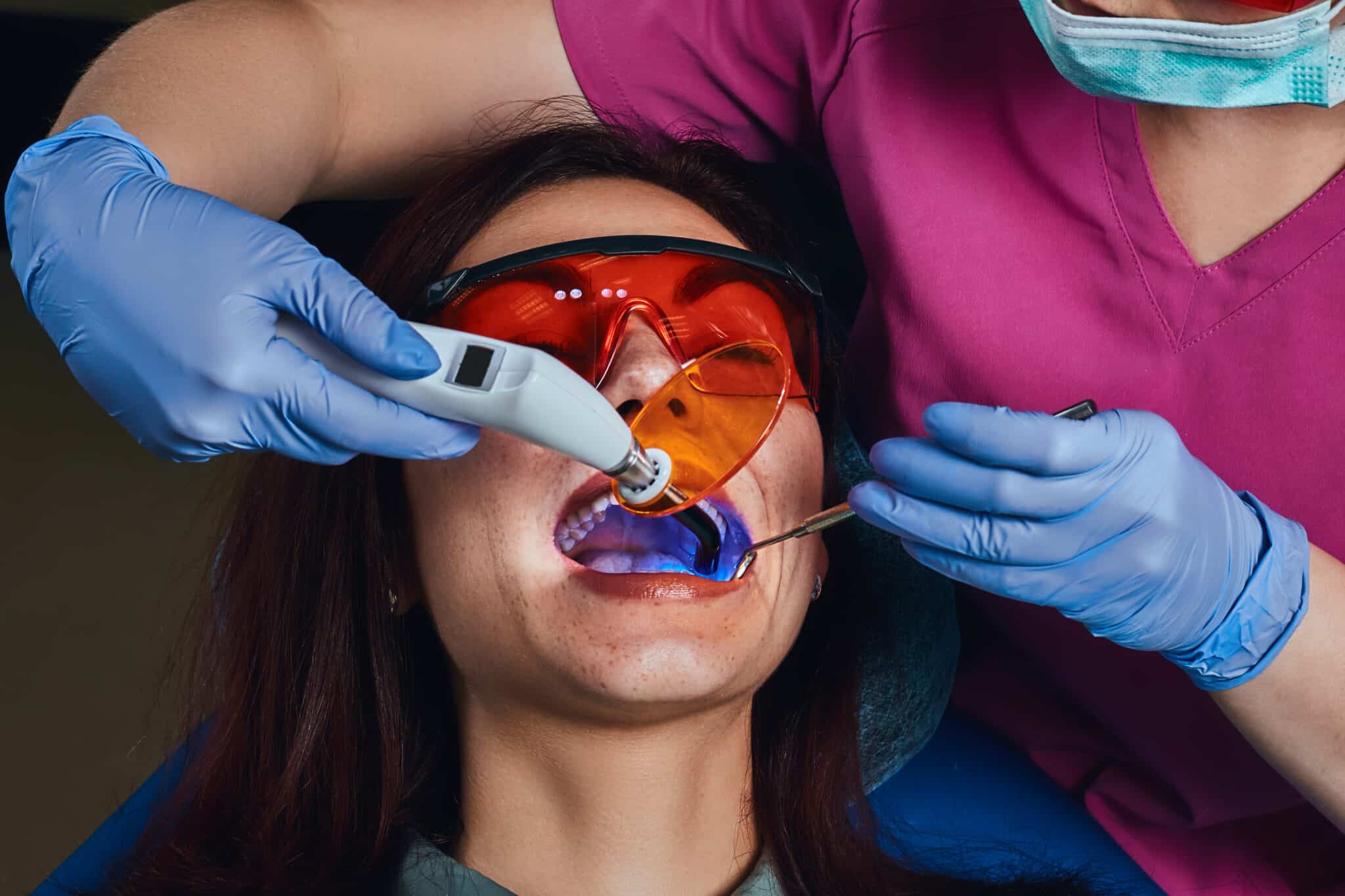Dental anxiety is a common issue, affecting many individuals and potentially leading to postponed or avoided dental appointments. Maintaining good oral health and staying up to date on dental treatments is crucial, which is why our family dental care practice in Pickering, ON, offers a range of sedation dentistry options to alleviate dental anxiety and ensure a comfortable, stress-free experience for our patients.
Sedation dentistry involves the use of medication to help patients relax during dental procedures. With various levels of sedation available, from minimal to deeper sedation, this form of dentistry caters to patients with different degrees of dental anxiety, complex dental needs, or special healthcare requirements.
In this comprehensive article, we will explore the different types of sedation dentistry, their benefits, and how they can help patients with dental anxiety or phobia achieve the dental care they need. We will also discuss factors to consider when choosing sedation dentistry and address common patient concerns. Our goal is to empower you with knowledge about sedation dentistry so you can make informed decisions about your oral health care in a comfortable and stress-free environment.
Types of Sedation Dentistry
There are several forms of sedation dentistry available to cater to patients’ individual needs and preferences. They include:
1. Minimal Sedation
Minimal sedation typically involves administering nitrous oxide (laughing gas) mixed with oxygen through a mask placed over the patient’s nose. This form of sedation helps patients feel relaxed without inducing deep sedation or unconsciousness.
2. Oral Sedation
Oral sedation involves taking a prescribed medication by mouth before the dental procedure. This type of sedation can range from minimal to moderate, depending on the dosage. Patients remain awake but typically experience a state of drowsiness and relaxation.
3. IV Sedation
Administered intravenously, IV sedation allows for precise control over the sedation level and takes effect more quickly than oral sedation. Patients may feel groggy and have limited memory of the dental procedure.
4. General Anesthesia
General anesthesia induces deep sedation, rendering patients unconscious and completely unaware of their surroundings. This form of sedation requires a specialized anesthesiologist and is typically reserved for complex dental procedures or patients with severe anxiety.
Benefits of Sedation Dentistry
Sedation dentistry offers an array of benefits for patients with dental anxiety or phobia, as well as those with specific dental needs:
1. Alleviating Dental Anxiety
Sedation dentistry helps patients feel calm, relaxed, and comfortable during dental procedures, ultimately reducing dental anxiety and enabling them to receive necessary care.
2. Enhancing Comfort
Patients with sensitive teeth, gag reflex, or difficulty sitting still can benefit from the increased comfort provided by sedation dentistry.
3. Allowing for Multiple Procedures in One Visit
Sedation dentistry can enable dentists to perform multiple procedures within a single appointment, minimizing the number of visits and ensuring a more efficient dental experience.
4. Improving Pain Management
Sedation dentistry can enhance pain management by better-controlling discomfort during dental procedures.
5. Benefiting Patients with Special Healthcare Needs
Patients with disabilities or certain health conditions may particularly benefit from sedation dentistry, as it ensures comfort and safety during dental treatments.
Factors to Consider When Choosing Sedation Dentistry
When evaluating if sedation dentistry is the right choice for you, consider:
1. Your Level of Dental Anxiety
Consider how anxious you are about dental procedures and whether your anxiety interferes with your ability to receive dental care.
2. Your Dental Needs
Discuss with your dentist the nature and length of the dental procedure and your overall dental health to determine if sedation dentistry is appropriate.
3. Previous Dental Experiences
Reflect on any prior dental experiences that might have been traumatic or exceptionally unpleasant, and discuss your concerns with your dentist.
4. Your General Health
Share your complete medical history, including any medications and health conditions, with your dentist to ensure that sedation dentistry is safe and suitable for your needs.
Common Concerns About Sedation Dentistry
Patients often have concerns about sedation dentistry that can be addressed through open communication with their dental care providers:
1. Safety
Sedation dentistry is a safe option for most patients, provided that it is administered by trained and experienced professionals. Discuss any concerns about safety with your dentist and learn how they ensure patients’ well-being during sedation.
2. Cost
The cost of sedation dentistry varies depending on the type, materials, and level of sedation used. Talk to your dentist to clearly understand the costs involved and any potential payment plans or insurance coverage.
3. Recovery
Patients can expect varying recovery times depending on the type and level of sedation chosen. Some sedation options may require you to arrange for a friend or family member to accompany you to the appointment and drive you home afterward. Discuss the expected recovery process with your dentist to adequately prepare for your dental appointment.
Conclusion
Sedation dentistry can be a game-changer for patients with dental anxiety or specific dental needs, providing a comfortable and stress-free experience while receiving essential dental care. By understanding the types of sedation dentistry available, their benefits, and factors to consider when choosing sedation, you can make informed decisions about your dental health care. Our experienced and compassionate dental team in Pickering, ON, is here to help guide you through every step of the process. Contact us today to discuss your Pickering sedation dentistry options and enjoy a pleasant dental experience in a comfortable and supportive environment.


